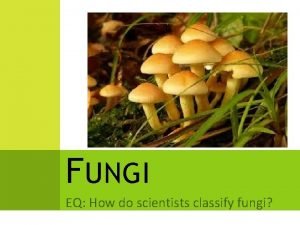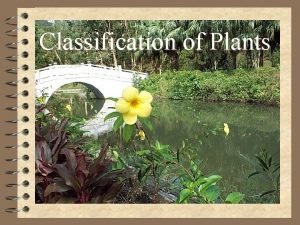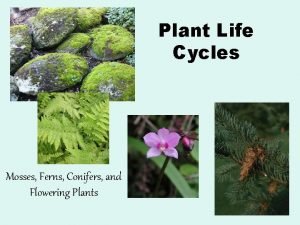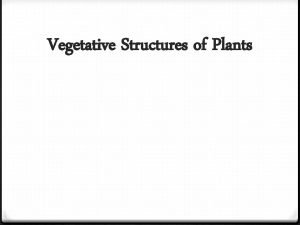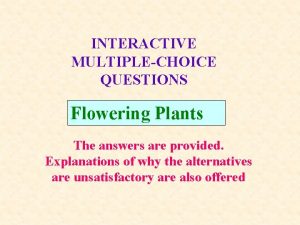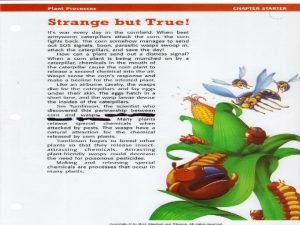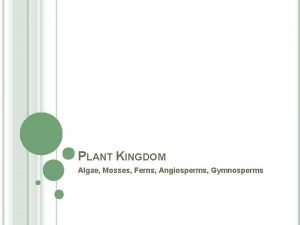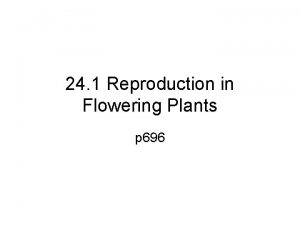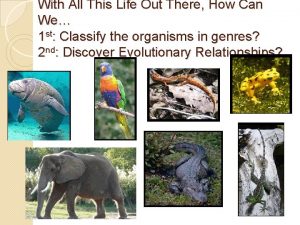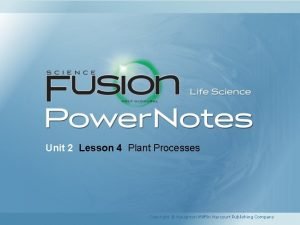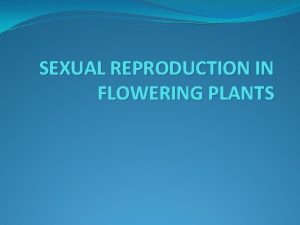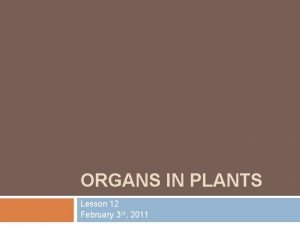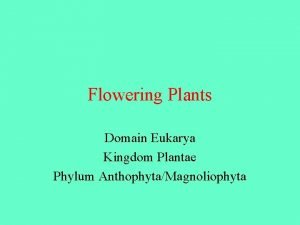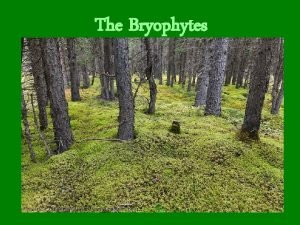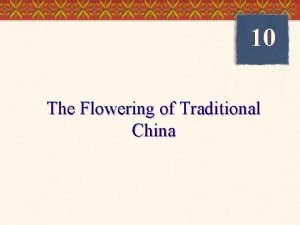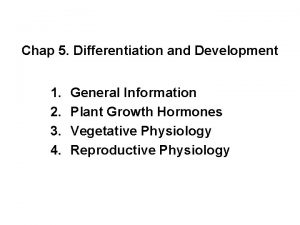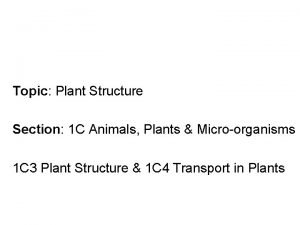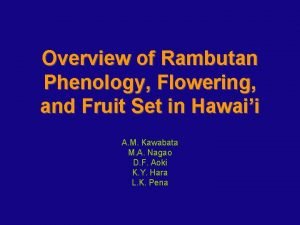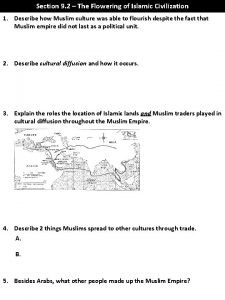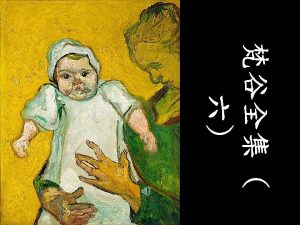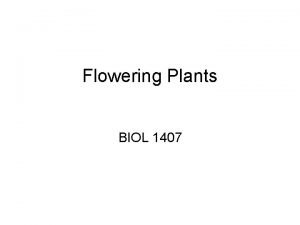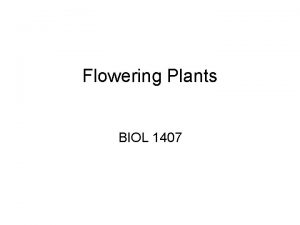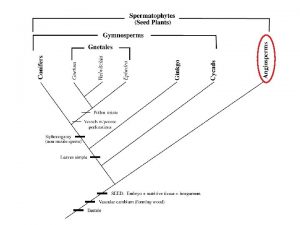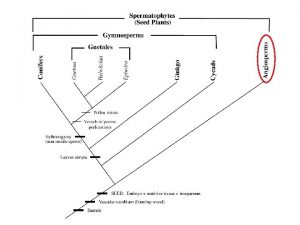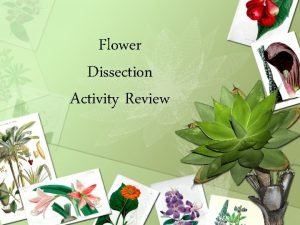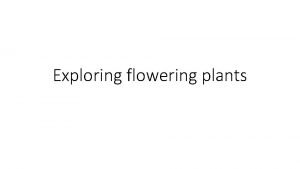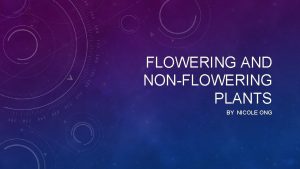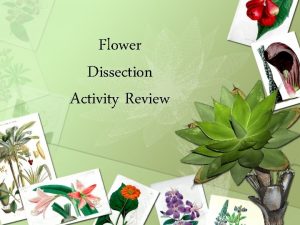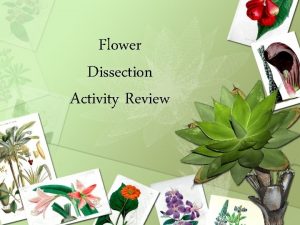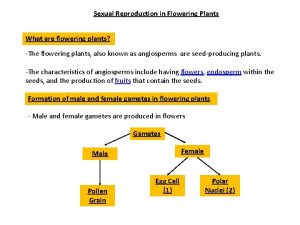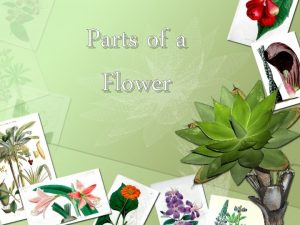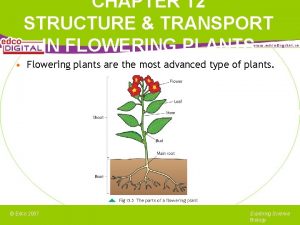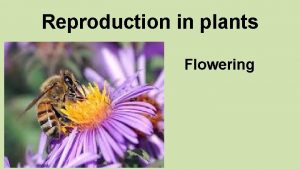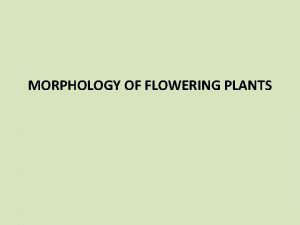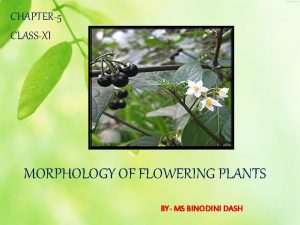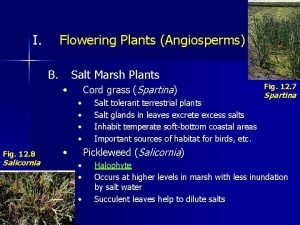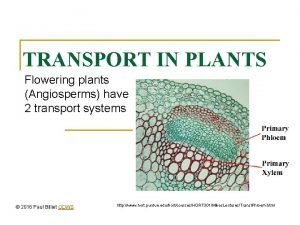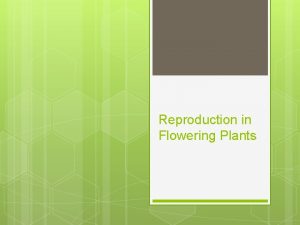MORPHOLOGY OF FLOWERING PLANTS Morphology is the name























































- Slides: 55

MORPHOLOGY OF FLOWERING PLANTS

Morphology is the name given to the science that deals with the study of the form and structure of things. No matter which plant you take, the morphology of a flowering plant includes the roots, stem, leaves, flowers, and fruits.

Root System The root is a brown, nongreen and underground part of a plant. Root with their branches is collectively called a root system. There are three types of the root system: Taproot System The taproot is mainly present in dicotyledonous plants. It develops from the radicle of the germinating seed, along with its primary roots and branches, giving rise to the taproot system. Mustard seeds, mangoes, grams

The Fibrous root System The fibrous root is mainly present in ferns and in all monocotyledonous plants. This root develops from thin, moderately branching roots or a primary roots, growing from the stem. The fibrous root system usually does not penetrate deep into the soil, therefore, on full maturity, these roots look like a mat or a carpet on the floor. Wheat, paddy, grass, carrots, onion, grass are a few examples of monocotyledonous plants with the fibrous root system. The Adventitious root System The roots which originate from any part of the plant body other than the radicle is called the adventitious root system. This root system is mainly present in all monocotyledonous plants. In plants, the adventitious root system is used for various purposes, like vegetative propagation, mechanical support, etc. Banyan tree, maize, oak trees, horsetails are a few examples of monocotyledonous plants with the adventitious root system.

Function of root : • Absorption of water and mineral from soil • Anchorage of the plant body • Storing reserve food material. • Synthesis of plant growth regulators.

Regions of Root The three regions of a root are- The Root Cap. The region of maturation. The region of Elongation. Region of Meristamatic Activity

Region of meristematic activity : ◦ Cells of this region have the capability to divide. ◦The cells of this region are very small, thin-walled and with dense protoplasm. • Region of elongation : ◦ Cells of this region are elongated and enlarged. • Region of Maturation : ◦ This region has differentiated into matured cells. ◦Some of the epidermal cells of this region form thread-like root hairs, which absorbs water and minerals from the soil.

Modifications of Root • Roots are modified for support, storage of food, respiration. • For support : Prop roots in banyan tree, stilt roots in maize and sugarcane. • For respiration: pneumatophores in Rhizophora (Mangrove). • For storage of food: Fusiform (radish), Napiform (turnip), Conical (carrot).

Roots are modified for support, storage of food, respiration. Modifications of Root

The Stem : • Stem is the aerial part of the plant and develops from plumule of the embryo. • It bears nodes and internodes. • Bears bud, may be axillary or terminal • Main function is to spreading branches bearing leaves, flower and fruits.

Modifications of Stem • For food storage: Rhizome (ginger), Tuber (potato), Bulb (onion), Corm and Colocasia). • For support: Stem tendrils of watermelon, grapevine, and cucumber. • For protection: Axillary buds of stem of citrus, Bougainvillea get modified into pointed thorns. They protect the plants from animals. • For vegetative propagation: Underground stems of grass, strawberry, lateral branches of mint and jasmine. • For assimilation of food: Flattened stem of opuntia contains chlorophyll and performs photosynthesis.


The Leaf • Developed from shoot apical meristem, flattened, green structure. • Manufacture the food by photosynthesis. It has bud in axil. • A typical leaf has leaf base, petiole and lamina. • Leaf attached to the stem by leaf base. • May bear two small leaves like structure called stipules. • Leaf base may swollen to form pulvinus. • The structure that holds the leaf called petiole. • The green expanded part of the leaf is called lamina or leaf blade.

Leaf modifications

Venation : • The arrangement of veins and the veinlets in the lamina of leaf is termed as venation. • Veinlets form a network – reticulate venation. (dicot leaf) • Vein runs parallel to each other – parallel venation. (monocot leaf)

Types of leaf : • A leaf is said to be simple, when its lamina is entire or when incised, the incisions do not touch the midrib. • When the incisions of the lamina reach up to the midrib breaking it into a number of leaflets, the leaf is called compound. •

Bud present in the axil of petiole in both simple and compound leaf. • Bud never present in the axil of the leaflets of compound leaf. ◦Pinnately compound leaf: number of leaflets present in a common axis called rachis, which represents the midrib of leaf. ◦Palmately compound leaves: leaflets are attached to the common point i. e. at the top of the petiole.


Phyllotaxy • It is the pattern of arrangement of leaves on the stem of branch. ◦Alternate : a single leaf arises from each node ◦Opposite : a pair of leaves arise at each node and lie opposite to each other. ◦Whorled : more than two leaves arise at a node and form a whorl.



Modifications of leaves are often modified to perform functions other than photosynthesis. • Modified to tendril for climbing as in peas. • Modified to spines for defense as in cacti. • Fleshy leaves of onion store food. • In Australian acacia, the leaves are small the short-lived. The petioles expanded, become green and synthesize food. • In insectivorous plant leaves are modified to trap insects e. g. pitcher plant, Venus fly trap.

THE INFLORESCENCE : The arrangement of flowers on the floral axis of stem. • A flower is a modified shoot – ◦Apical meristem changes to floral meristem. ◦Internodes do not elongate and the axis gets condensed. ◦The apex produces different kinds of floral appendages laterally at successive nodes instead of leaves. • Racemose : the main axis continues to grow; the flowers are borne laterally in an acropetal succession. • Cymose : the main axis terminates in flower, hence limited to grow. The flowers are borne in a basipetal order.

1. Main axis is unlimited in growth-Radish, Mustard, Amaranthus. 2. Racemose : Cymose : Main axis is limited in growth-Cotton, Jasmine, Calotropis.

THE FLOWER • Atypical flower has four different kinds of whorls arranged successively on the swollen end of the stalk or pedicel called thalamus or receptacle. ◦The four whorls are: - • Calyx, corolla, Androecium and Gynoecium. • Calyx and corolla are accessory organs. • Androecium and Gynoecium are reproductive organs. • In flower like lily, the calyx and corolla are indistinct and are called perianth. • Bisexual: flower having both Androecium and Gynoecium. • Unisexual: flower having either stamens or carpel.

Calyx • It is the outermost whorl • Each member called sepals. • Sepals are green leaf like protect the flower in the bud stage. • Gamosepalous: sepals are united. • Polysepalous: sepals are free.


Corolla • It is the second whorl of a flower. • Each member called petal. • Usually brightly colored to attract insect for pollination. • Polypetalous: petals are free. • Gamopetalous: petals are united or fused.

Androecium : • It is the male sex organ of the flower. • Composed of stamens. • Each stamen consists of a stalk or filament and an anther. • Each anther is usually bilobed and each lobe has two chambers, pollen sac. • Pollen grains are produced inside the pollen sacs. • A sterile stamen is called staminode. • Epipetalous: stamens attached to the petals. E. g. brinjal.

• Epiphyllous: stamens attached to the perianth. E. g. lily. • Polyandrous: stamens are free. • Monoadelphous: stamens united into one bunch or one bundle e. g. China rose. • Diadelphous: stamens fused to form two bundles as in pea. • Polyadelphous: stamens fused to form more than two bundles as in citrus.

Gynoecium • It is the female reproductive part of the flower. • Members are called carpel. • Each carpel has three parts namely stigma, style and ovary. • Ovary is the enlarged basal part on which lies the elongated tube, the style. • The stigma usually at the tip of the style.

• Stigma is the receptive surface for pollen grain. • Each ovary bears one or more ovules. • Ovule attached to a flattened cushion-like placenta in the ovary. • When more than one carpel is present they may be: ◦Apocarpous: all carpels are free. E. g. rose, lotus ◦Syncarpous: carpels fused. E. g. Tomato mustard.

Symmetry : • Actinomorphic: radially symmetrical. • Zygomorphic: bilaterally symmetrical. • Asymmetrical: when a flower cannot be divided into two equal half in any plane.

SYMMETRY OF FLOWERS ymmetry of flower On the basis of no. of floral appendages On the basis of position of calyx, corolla, androecium with respect to ovary Actinomorphic (radial symmetry) Trimerous Hypogynous (superior ovary) Zygomorphic (bilateral symmetry) Tetramerous Perigynous (half inferior ovary) Asymmetric (irregular) Pentamerous Epigynous (inferior ovary)

Pattern of flower : • A flower may be trimerous, tetramerous or pentamerous when the floral appendages are in multiple of 3, 4 or 5 respectively. • Reduced leaf found at the base of the pedicel are called bract. • Flowers which bears bract are said to be bracteates. • Flowers without bract are said to be ebracteate.

Position of floral parts on thalamus : • Hypogynous : ◦Gynoecium occupies the highest position. ◦Other whorls are present below the Gynoecium. ◦Ovary is said to be superior. E. g. mustard, China rose and brinjal. • Epigynous : ◦The thalamus encloses the ovary. ◦Thalamus fused with ovary. ◦The other whorl arises above the ovary.

◦Ovary is inferior. E. g. guava, cucumber, ray florets of sunflower. Perigynous : ◦Ovary is said to be half inferior. ◦The Gynoecium situated in the centre. ◦Other whorls located on the rim of the thalamus almost at the same level. E. g. plum, Rose, peach.


Aestivation : the mode of arrangement of sepals or petals in the floral bud with respect to the other members of the same whorl is known as aestivation. • Valvate : sepals or petals in a whorl just touch one another at the margin, without overlapping. E. g. Calotropis.

• Twisted : one margin of the appendage overlaps that of the next one and so on. E. g. china rose. • Imbricate : the margin of sepals or petals overlap one another but not in any particular direction as in Cassia and gulmohur. • Vexillary : The large petal (standard) overlaps the two lateral petals (wings) which in turn overlap the two smallest anterior petals (keel).


Types of Placentation : arrangement of ovules within the ovary is known as Placentation. • Marginal: Placenta forms a ridge along the ventral suture of ovary. . • Axile: Margins of carpels fuse to form central axis.

• Parietal: Ovules develop on inner wall of ovary. • Free central: Ovules borne on central axis, lacking septa. • Basal: Placenta develops at the base of ovary.

The fruit : After fertilization, the mature ovary develops into fruit. The parthenocarpicfruits are formed from ovary without fertilization.

THE FRUIT : • Generally fruits consist of a wall or pericarp and seeds. • Pericarp may be dry or fleshy. Pericarp differentiated into – ◦Outer epicarp, ◦Middle mesocarp. ◦Inner endocarp. • Fruit developed from monocarpellary superior ovary and are one seeded. Such fruit is said to be drupe as in mango and coconut. • Edible part of the mango is mesocarp. • Mesocarp of coconut is fibrous.


THE SEED : • After fertilization ovules developed into seed. • A seed is made of seed coat and embryo. • The embryo is made up of ◦A radicle ◦An embryonal axis ◦One or two cotyledons.

Structure of dicotyledonous seed : • Outer most covering of seed is seed coat. • Seed coat has – ◦Outer testa ◦Inner tegmen. • The hilum is a scar on the seed coat, the point of attachment of developing seed with the fruit. • Above the hilum is a small pore called the micropyle. • Embryo present inside the seed coat, consists of - ◦An embryonal axis. ◦Two cotyledons

• Cotyledons are fleshy and store reserve food. • At the two end of embryonal axis are present the radicle and the plumule. • In some seed endosperm store the reserve food as in castor. • Mature seed without endosperm called non-albuminous seed or nonendospermous as in bean, gram and pea.

Structure of dicot seed

Structure of monocot seed

Structure of monocotyledonous Seed : • Generally monocotyledonous seeds are endospermic, orchids are nonendospermic. • In seeds of cereals such as maize, the seed coat is fused with the fruit wall. • The outer covering of separates the embryo by a proteinous layer called aleurone layer. • Embryo is small and located one side of the endosperm and consists of ◦One large shield shaped cotyledon known as scutellum. ◦A short axis with radicle and plumule. ◦Plumule covered by a sheath called coleoptile. ◦Radicle covered by a sheath called coleorhiza.


2. Solanaceae (Potato Family) Floral formula: % K(5) C 1 + 2 + (2) A(9) + 1 G 1

 Examples of non flowering plants
Examples of non flowering plants Basic classification of plants
Basic classification of plants Non flowering plants classification
Non flowering plants classification Parts of a typical flowering plant
Parts of a typical flowering plant Ferns and conifers
Ferns and conifers What are the main parts of flowering plants
What are the main parts of flowering plants Multiple choice questions on flowering plants
Multiple choice questions on flowering plants What is called
What is called Root parts
Root parts Moss fern gymnosperm angiosperm
Moss fern gymnosperm angiosperm Reproduction in flowering plants
Reproduction in flowering plants Cladogram of 5 indoor plants
Cladogram of 5 indoor plants Unit 2 lesson 12 flowering plants
Unit 2 lesson 12 flowering plants Factors affecting flowering in plants ppt
Factors affecting flowering in plants ppt Plant organ
Plant organ Part of flower that produces pollen
Part of flower that produces pollen Flowering plants phylum
Flowering plants phylum Derivational morphology and inflectional morphology
Derivational morphology and inflectional morphology Name three line segments
Name three line segments Nonvascular plants definition
Nonvascular plants definition Non vascular vs vascular plants
Non vascular vs vascular plants C3 plants vs c4 plants
C3 plants vs c4 plants Nonvascular plants phylum name
Nonvascular plants phylum name The flowering of romanticism summary
The flowering of romanticism summary The flowering of traditional china
The flowering of traditional china Nitrogen fertilizer for plants
Nitrogen fertilizer for plants Meiosis
Meiosis Ethylene pineapple flowering
Ethylene pineapple flowering Typical plant
Typical plant Foreshadowing in romeo and juliet
Foreshadowing in romeo and juliet Rambutan male flower
Rambutan male flower The flowering of islamic civilization
The flowering of islamic civilization Flowering plum orchard van gogh
Flowering plum orchard van gogh Hình ảnh bộ gõ cơ thể búng tay
Hình ảnh bộ gõ cơ thể búng tay Ng-html
Ng-html Bổ thể
Bổ thể Tỉ lệ cơ thể trẻ em
Tỉ lệ cơ thể trẻ em Gấu đi như thế nào
Gấu đi như thế nào Tư thế worms-breton
Tư thế worms-breton Bài hát chúa yêu trần thế alleluia
Bài hát chúa yêu trần thế alleluia Kể tên các môn thể thao
Kể tên các môn thể thao Thế nào là hệ số cao nhất
Thế nào là hệ số cao nhất Các châu lục và đại dương trên thế giới
Các châu lục và đại dương trên thế giới Công thức tính độ biến thiên đông lượng
Công thức tính độ biến thiên đông lượng Trời xanh đây là của chúng ta thể thơ
Trời xanh đây là của chúng ta thể thơ Cách giải mật thư tọa độ
Cách giải mật thư tọa độ Phép trừ bù
Phép trừ bù Phản ứng thế ankan
Phản ứng thế ankan Các châu lục và đại dương trên thế giới
Các châu lục và đại dương trên thế giới Thơ thất ngôn tứ tuyệt đường luật
Thơ thất ngôn tứ tuyệt đường luật Quá trình desamine hóa có thể tạo ra
Quá trình desamine hóa có thể tạo ra Một số thể thơ truyền thống
Một số thể thơ truyền thống Cái miệng nó xinh thế
Cái miệng nó xinh thế Vẽ hình chiếu vuông góc của vật thể sau
Vẽ hình chiếu vuông góc của vật thể sau Biện pháp chống mỏi cơ
Biện pháp chống mỏi cơ đặc điểm cơ thể của người tối cổ
đặc điểm cơ thể của người tối cổ

